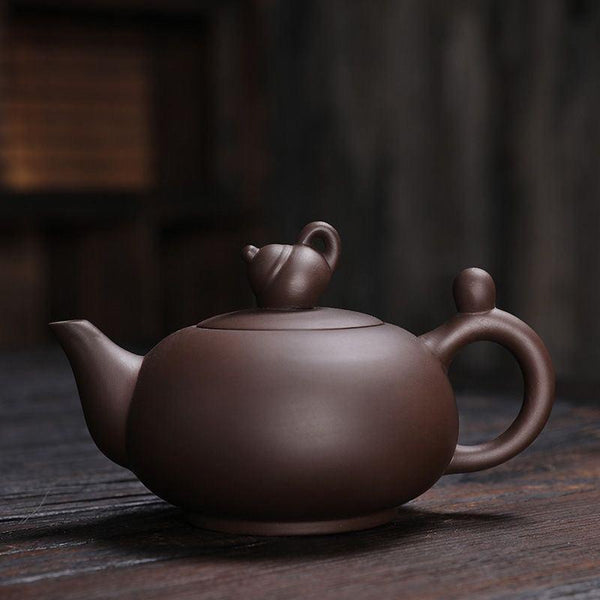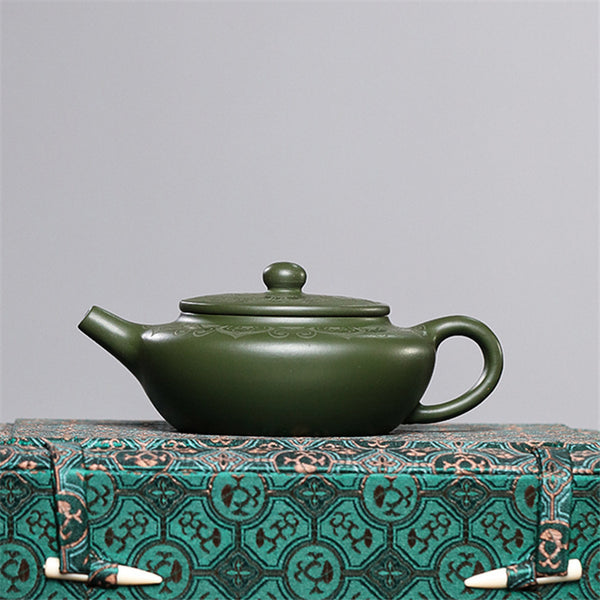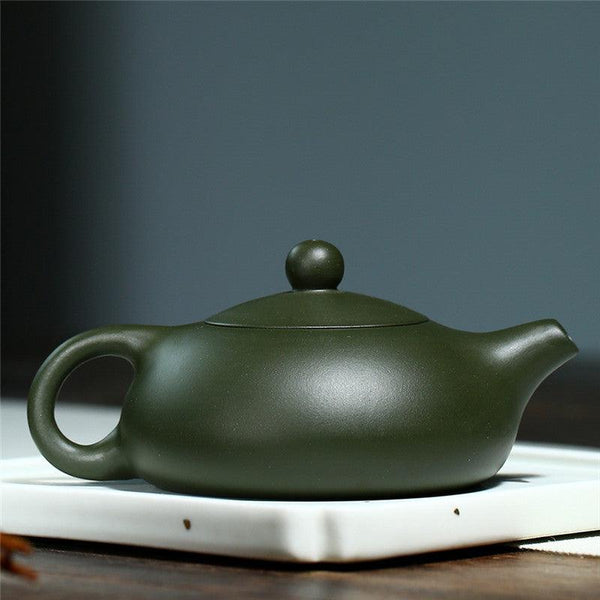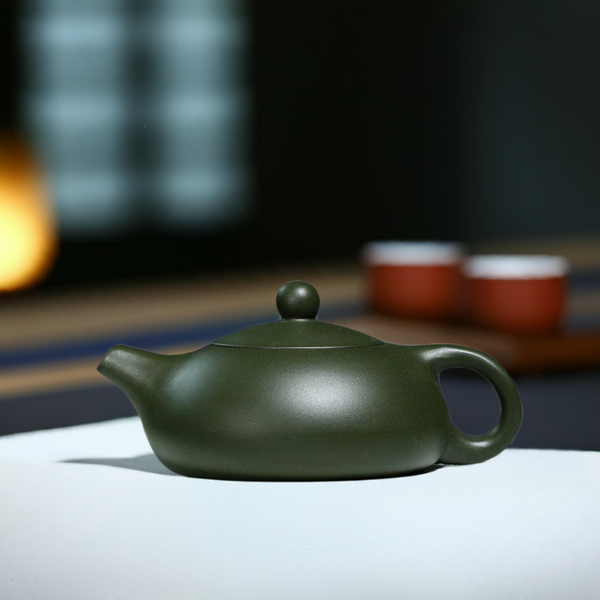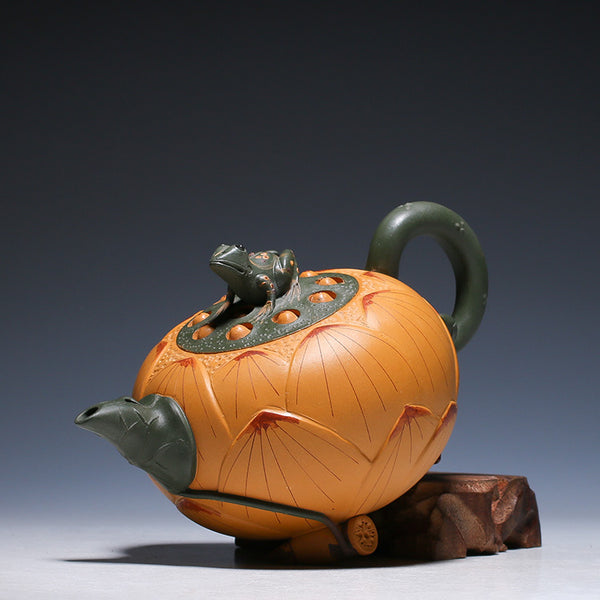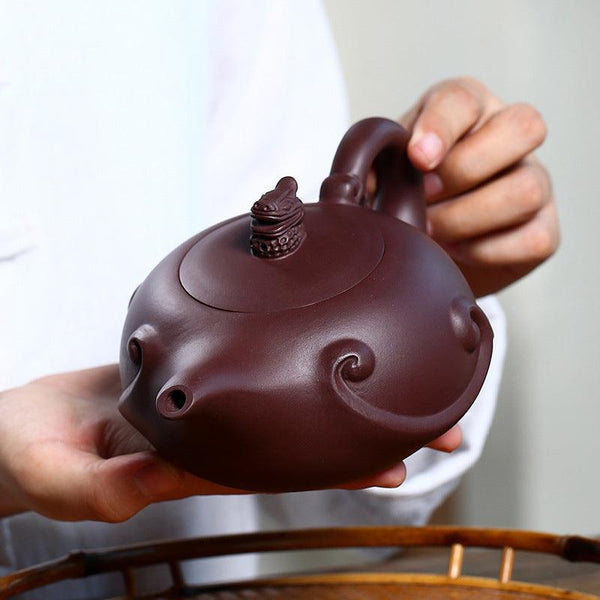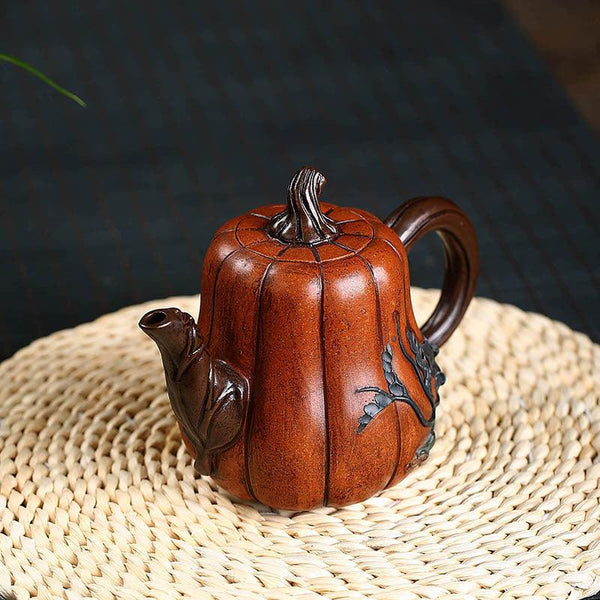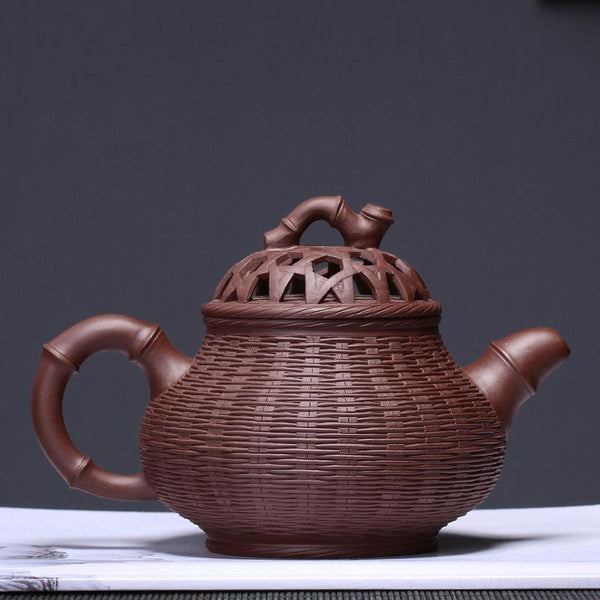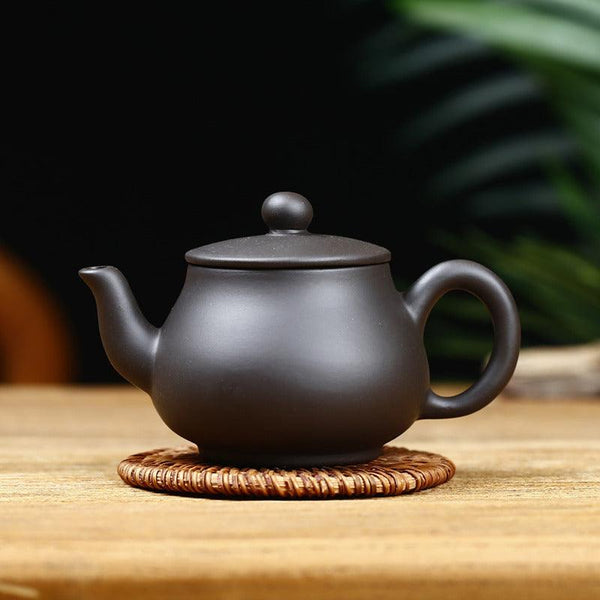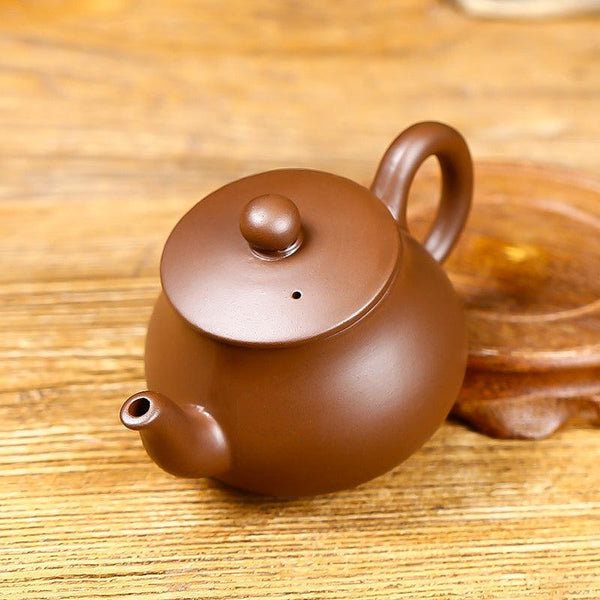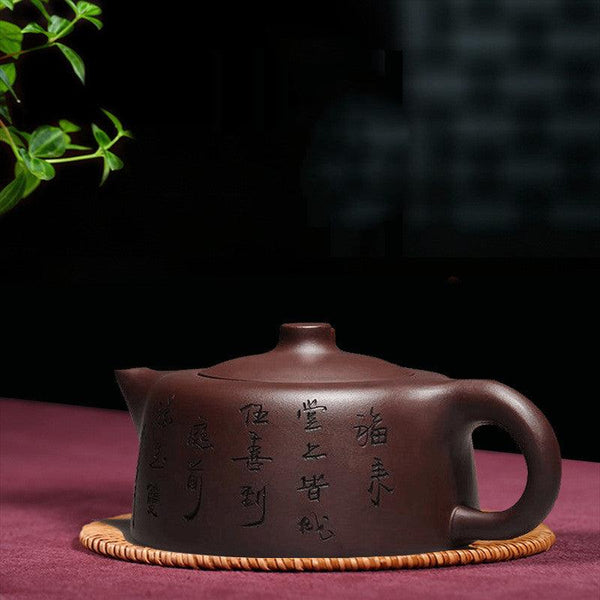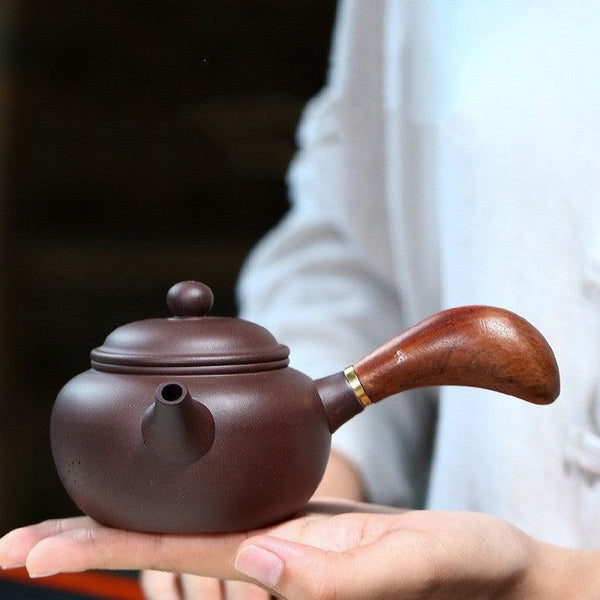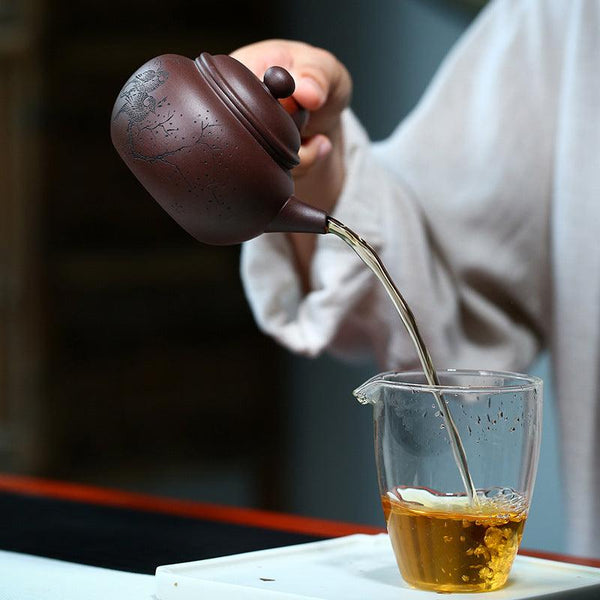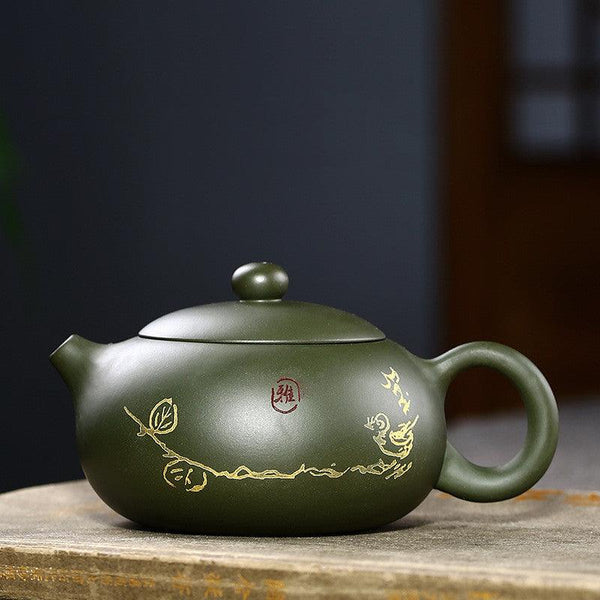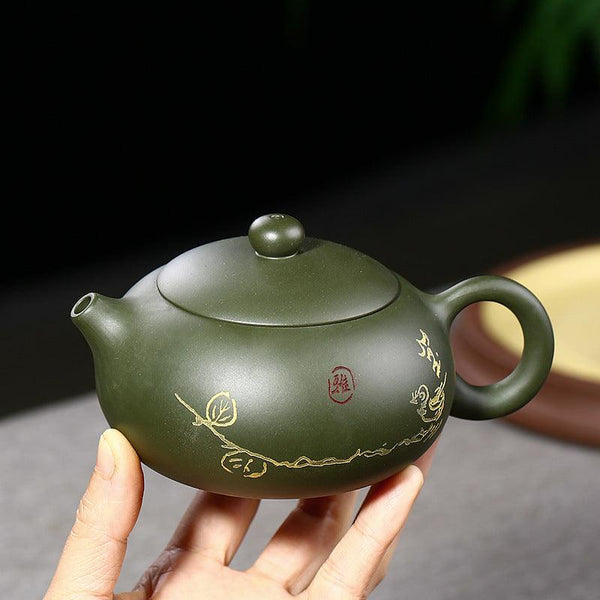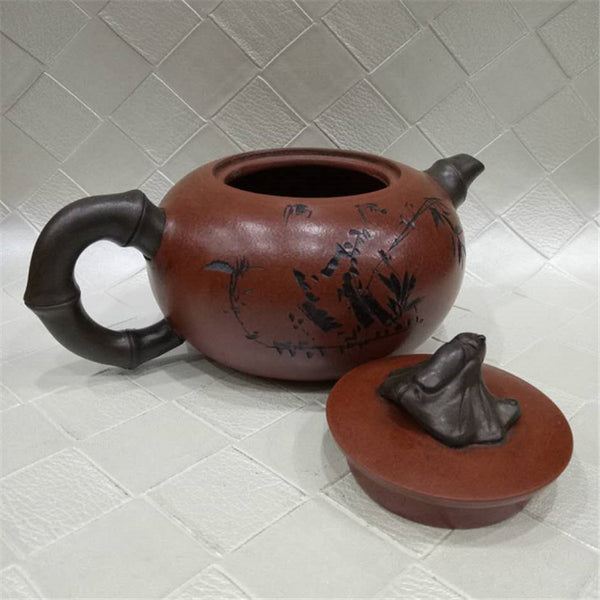A Zisha teapot is more than just a teapot; it’s a window into Chinese craftsmanship and a masterpiece of functionality and art. Originating in the Yixing region, these teapots are crafted from a unique type of clay, Zisha clay, that imbues each piece with distinct qualities, rich color, and cultural significance. Today, let’s take a journey to explore what makes the Zisha teapot so special and why it’s cherished around the world.
What is a Zisha Teapot?
Zisha teapots are hand-crafted from the natural, porous Zisha clay and are valued not only for their beauty but also for their impact on the tea-drinking experience. The clay’s texture allows it to absorb the essence of tea, enhancing flavors over time and making each brew a richer experience.
The Origins of Zisha Teapots
Zisha teapots have their roots in the Yixing region of Jiangsu Province, China. First crafted during the Ming Dynasty, these teapots were initially popular among scholars and artists who appreciated the artistry and uniqueness of each piece. Since then, Yixing has become synonymous with Zisha teapots, preserving centuries of tradition and innovation.
The Unique Zisha Clay
Zisha clay, also known as purple clay, is the heart of Yixing teapots. The clay is distinctively porous, which allows it to “breathe.” This unique property helps Zisha teapots absorb tea flavors, developing a patina that enhances each subsequent brew. Additionally, Zisha clay has a range of colors, from rich purples and reds to earthy greens, giving each teapot a unique appearance.
Types of Zisha Clay
- Purple Clay (Zini): The most traditional and popular type, known for its rich, deep color.
- Red Clay (Hongni): Offers a warmer tone and gives tea a unique flavor profile.
- Green Clay (Duan Ni): Less common but adds an earthy look, perfect for collectors.
Each type of clay brings a subtle yet distinct difference in brewing, making Zisha teapots versatile for tea lovers.
Crafting Process of Zisha Teapots
Creating a Zisha teapot is an art form that requires mastery and precision. First, artisans mine and refine the clay before shaping each teapot by hand. After shaping, the teapot undergoes a high-temperature firing process to solidify the clay, enhancing its porous structure. Each piece is truly one-of-a-kind, reflecting the artisan's skill and dedication.
Distinctive Designs of Zisha Teapots
Zisha teapots come in a variety of designs, each with its own character. Traditional designs often feature simple, round shapes that evoke a sense of harmony. However, some artisans are inspired by nature, crafting teapots in the form of fruits, flowers, and animals. These designs are not just beautiful but also practical, balancing aesthetic appeal with functionality.
Functional Advantages of Zisha Teapots
The porous nature of Zisha clay makes it ideal for tea brewing. Unlike glazed ceramics, Zisha clay allows air to interact with the tea, which enhances the flavor. Additionally, Zisha teapots retain heat well, helping to keep the tea warm without altering its taste or aroma.
The Aesthetic Appeal of Zisha Teapots
Beyond their functionality, Zisha teapots are works of art. Many teapots are decorated with carvings, inscriptions, or inlays, adding to their charm and value. The intricate designs showcase Chinese culture and artistry, making Zisha teapots cherished collectibles for art enthusiasts.
How Zisha Teapots Enhance the Tea-Drinking Experience
One of the most captivating aspects of a Zisha teapot is how it “remembers” the teas brewed within it. Over time, the teapot absorbs the essence of the tea, creating a natural patina that subtly flavors future brews. This characteristic makes each Zisha teapot unique and enhances the tea’s aroma and taste with each use.
Collecting and Caring for Zisha Teapots
For those interested in starting a Zisha teapot collection, it’s essential to look for authenticity and quality craftsmanship. Once you own a Zisha teapot, proper care is crucial. Avoid detergents; instead, rinse the teapot with warm water to preserve the clay’s natural properties.
Traditional Tea Ceremonies with Zisha Teapots
In traditional Chinese tea ceremonies, Zisha teapots play a vital role. They add an authentic touch to the ritual, emphasizing the tea's flavor and fragrance. Using a Zisha teapot in a tea ceremony is a way to honor both the tea and the centuries-old traditions of Chinese culture.
The Global Appeal of Zisha Teapots
Zisha teapots have transcended borders and become popular worldwide. Tea enthusiasts from Japan, Korea, and even the West have embraced these teapots for their unique brewing qualities and beautiful designs. They serve as a bridge between cultures, bringing the art of Chinese tea to a global audience.
Identifying Authentic Zisha Teapots
When searching for an authentic Zisha teapot, it’s essential to recognize quality. Look for marks of craftsmanship, like the artist’s signature or a hallmark from Yixing. Imitations often lack the same level of detail, so be sure to purchase from reputable sources to ensure authenticity.
Conclusion
In conclusion, Zisha teapots are not only functional items but also vessels of culture, history, and art. They bring a unique experience to tea drinking, one that evolves over time with each brew. For tea lovers and collectors alike, owning a Zisha teapot is a journey into the world of Chinese tradition, enhancing the enjoyment of tea in a way that is both timeless and deeply satisfying.


